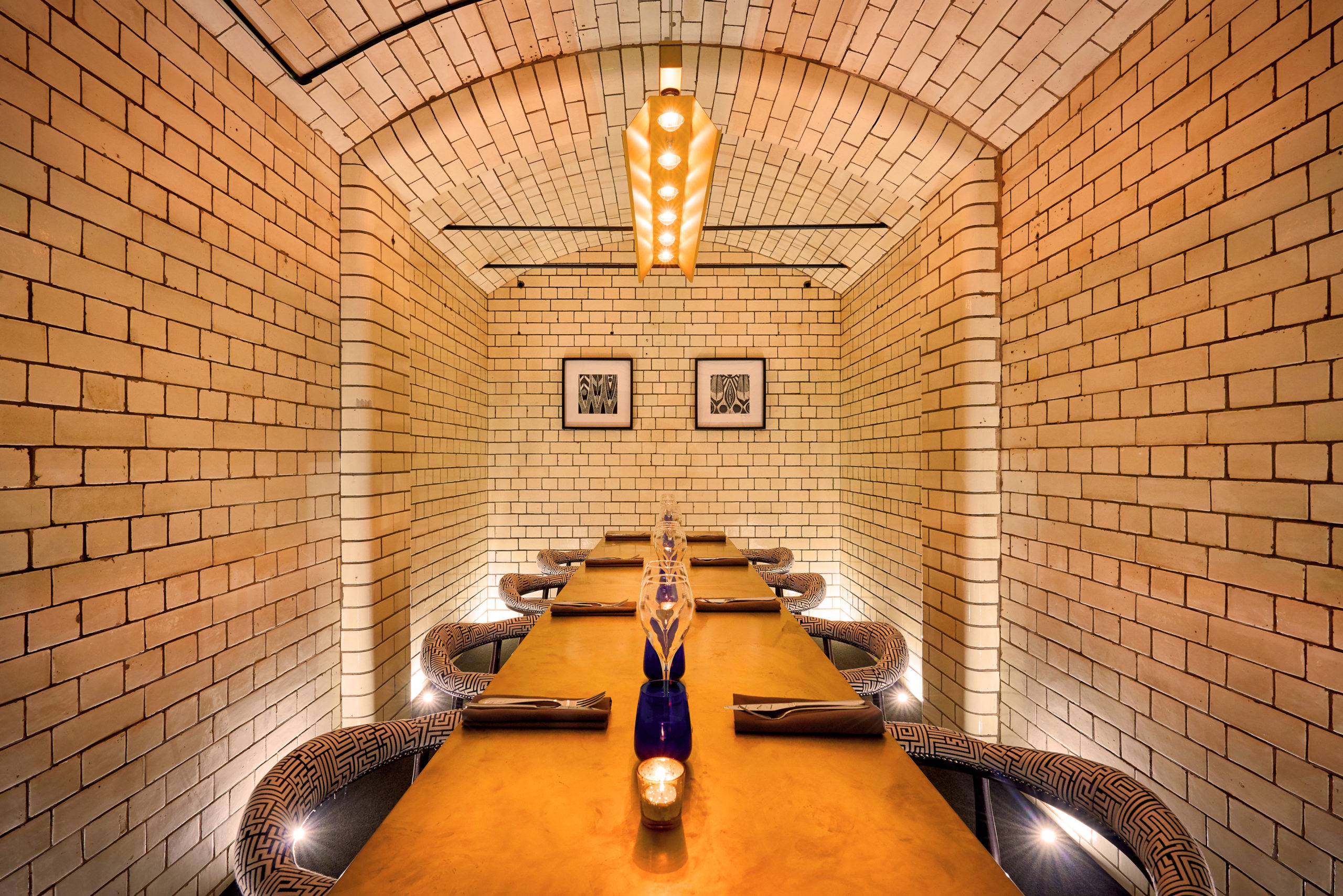In order to create a remarkable & memorable restaurant experience for your customer, it’s important to think about all of their 5 senses. Generally speaking, most restaurants focus on sight and taste, how the space looks and how the food tastes. If we were to focus just as much on sound, smell and touch, we can really elevate the overall customer experience.
We have taken a quick look into the 5 senses to explore how it is possible to shape customers’ sensory encounters through thoughtful design
-
Sight.
We could write pages and pages on how the restaurant design will directly impact the experience of the customer. From layout, to concept, to materials, to access….importantly the toilets….will elevate, or diminish, the judgement of a customer and change the choices they make.
If we just take lighting it can directly influence food choices…in well-lit dining establishments, individuals often opt for healthier food options such as vegetables and fish. In comparison to dimly lit restaurants, where people tend to gravitate towards more indulgent food choices. Studies indicate that our inclination towards healthier eating is linked to mental alertness, a quality facilitated by brighter lighting.
2. Taste
Taste isn’t entirely about what’s on the palate, there are other factors that can affect our perception when it comes to taste. When we look into the type of restaurant crockery we use; serving food on heavier crockery is said to make the food taste richer and more indulgent. A study at Oxford University served two bowls of the same yoghurt, one in a heavy porcelain bowl and the other in a thin plastic bowl; the students thought these tasted different, the one in the heavier bowl was said to taste richer, more indulgent and more expensive.
This is not the only factor that can dictate our sense of taste, the colour, shape and texture of the crockery also has an impact. Generally, eating/drinking out of a smooth, rounded object will make the contents taste sweeter compared to out of an angular/spiky object. Rounded objects are said to increase our perceived sweetness. In terms of colour, studies have shown drinking/eating from red objects also make the contents taste sweeter and richer.
3. Sound
Sound is absolutely imperative to a restaurant and bar design. Considerations on restaurant acoustics is key to creating the best customer experience and an element often overlooked. Even with great tasting food, poor restaurant acoustics will lead to dissatisfied customers. There are a number of amazing materials & solutions in the market that we use to conquer this and we talk more about it in here
Other elements are dependent on the setting that you desire to create, whether it be social/bustling or a romantic/quiet or somewhere in the middle. For example creating the right playlist is a great place to start to set the scene, then getting the right volume, you don’t want to create a lombardo effect where customers can’t hear one another and so everyone starts to speak louder and louder.
4. Smell
Smell has a large impact on our sense of taste, a lot of flavour of food comes from smell, so when the sense of smell is compromised, a considerable part of one’s ability to perceive and enjoy flavours is lost. The renowned restaurant in Catalonia, Spain: El Celler de Can Roca, experiments with fragrance to great results. Their pastry chef, Jordi Roca is known for recreating well-known perfumes into an “edible reality” they have collaborated with designers such as Calvin Klein on their famous Eternity perfume. It shows the power of elevating this sense and that the surroundings must allow for such ambience and creativity to excel.
5. Touch
Touch can be felt literally and figuratively. A customer’s impression of a restaurant can be determined through the textures of the interior space, the texture of the food and even how textures look; for instance raw materials such as concrete, metal used in a space could make the customer feel quite cold as opposed to warm colours and soft furnishings. Figuratively, we also have a sense of feeling through touch, for instance if we’re in a large empty restaurant, we would feel different to being in the same restaurant when it’s lively and full of people, the customer experience would be entirely different.
If you would like more advice on how to best design your restaurant please get in touch and we will happily chat you through the best options for you.







